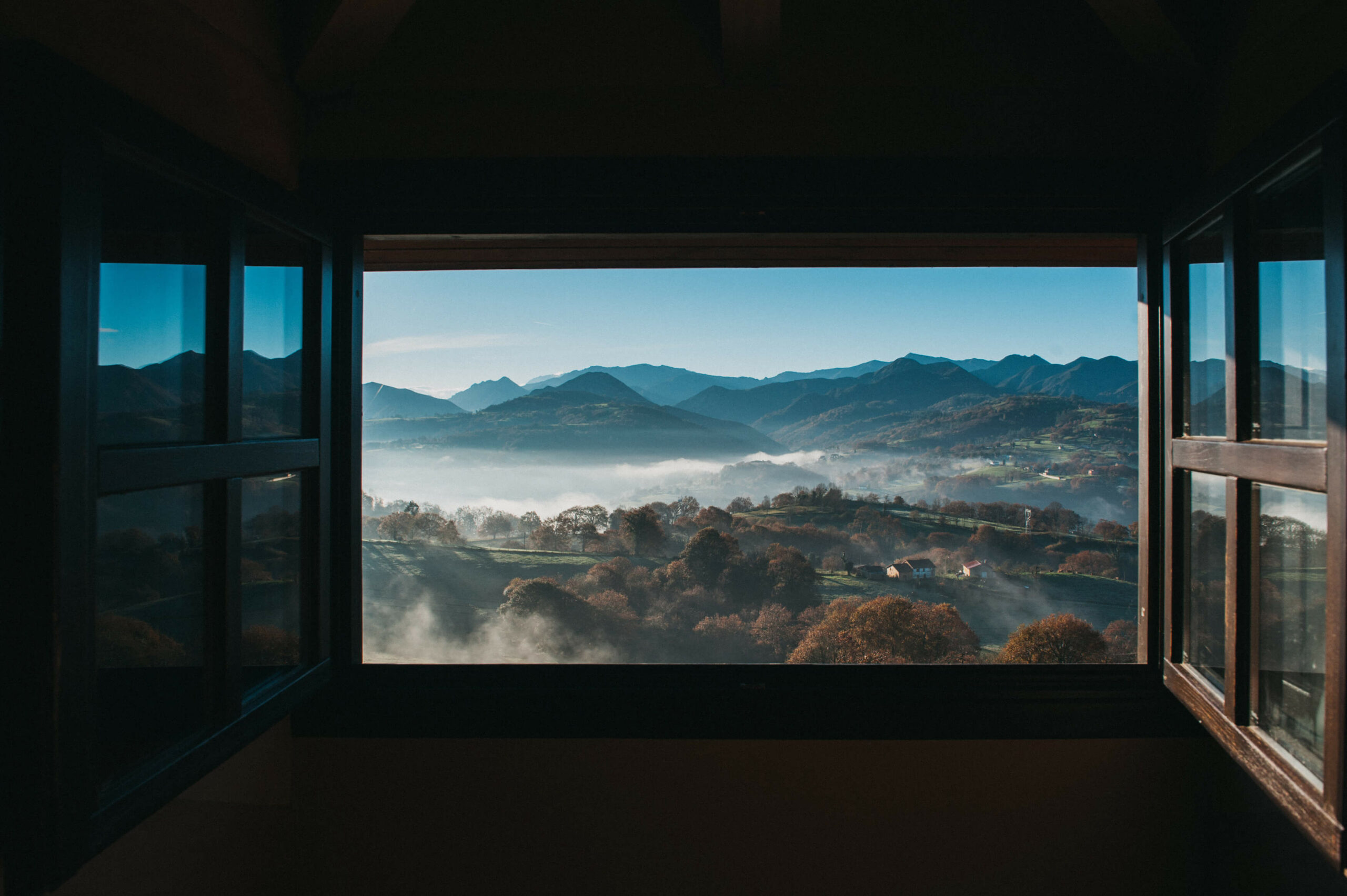
ADVENTURES IN ASTURIAS
When you’re longing for adventure, pack your bags for Asturias, the emerald jewel in Spain’s crown. This lush green region in northern Spain is a tempting landscape of wild coast, pristine countryside and rugged mountain ranges that soaring eagles, brown bears and wolves call home.
Blessed with no fewer than seven Biosphere Reserves, or 1% of the world’s total, Asturias is Spain’s best-protected and least-manicured countryside. Outdoor lovers, thrill-seekers and active types all adore it here. Pull on boots and hike the snow-capped Picos de Europa mountain range, horseback ride through valleys rimmed with tall pines, canoe across serene, glassy lakes, or catch some of the best waves in Europe.
There’s something about getting up close and personal with nature that offers an opportunity to reconnect with yourself on a deeper and more profound level. It’s also known to improve health and wellbeing, can help you discover that fleeting feeling of ‘being in the moment’, and most of all, it’s fun to get outside. Asturias offers plenty of opportunities to be active in nature, so take your pick and create your own adventure.
Reach for new heights in the Picos de Europa National Park
Stretching 250 sq km across southeastern Asturias, the Picos de Europa mountains are made up of three massifs. The hills are ideal for hiking in summer, offering winding, verdant trails across wildflower-strewn meadows and up to breathless heights above the valley floor. In the colder months, they become a winter wonderland for snowshoeing and cross-country skiing.
Climbers are catered for too, with a patchwork of rock faces and routes for all levels of expertise while the limestone peak, Naranjo de Bulnes (also known as the Pico Urriellu), coming in at 2,519 meters, should only be tackled by experienced climbers. Although not the highest peak in the Cantabrian mountains, it is considered the toughest and can be found on most self-respecting mountaineers list of challenges.
Canoeing, horseback riding and peaceful lake walks
The Picos de Europa National Park is also home to a number of glacial lakes, including Enol and Ercina, or the Lakes of Covadonga. This is the ideal location for canoeing or hikes along the banks to really absorb the breathtaking beauty of your surroundings.
Les Piragües is an international canoe race that takes place on the Sella River every August. But you don’t have to be a competitor to enjoy this, or any other beautiful stretches of water, with canoe excursions suitable for all levels available across the region.
Somiedo Natural Park in the foothills of the Cantabrian mountains, covered in ancient oak and birch forests, is home to four peaceful lakes including the spectacularly scenic Lago del Valle, watched over by thrusting mountain peaks and with barely another soul in sight, you might have the place to yourself.
Winding mountain roads, dense forests and lush valley floors all make superb horse riding terrain. With local stables to be found dotted across the region, horseback riding can be arranged for everyone from novices to experienced riders.

Surf’s up: take to the waves
With over 214 miles of coastline, Asturias is as famed for its beaches as its mountains with more than 200 strung along the Bay of Biscay. Tapia, located a mere 10-minute drive from Palacio de Figueras, is a surfer’s paradise. Thrill-seekers can get their adrenaline hit by catching some big waves, there are surf schools if you fancy a lesson, and once a year the pros arrive in style for the Goanna International Open.
If you’re looking for more big waves to catch, La Espasa, Salinas and Rodiles are also renowned surf spots.
Sprawling dunes and cliff top walks
Part of a nature reserve, Barayo is a sweep of sandy beach set in a pretty bay with a river winding through wildlife-rich wetlands and sprawling dunes, and sea caves at its east end. Try the hiking route that runs along a stretch of the Cantabrian Coast and explore ancient forests, springy meadows, steep cliffs, and hidden coves and beaches, all set to the soundtrack of the ocean waves.
Follow in pilgrims footsteps along the Santiago de Compostela route
Come to follow the original pilgrim path, or Camino Primitivo, first walked by medieval king Alfonso II, as he set out to find the tomb of Saint James in what is now called Santiago de Compostela. The landscape hasn’t changed all that much since then.

Hug a tree
The ancient woodlands in Muñiellos are a sight to behold, home to the largest oak forest in the peninsula as well as swathes of birch, holly and beech trees. On the banks of the Upper Narcea river, ash trees and poplars grow in vast clusters. Trails shoot off in all directions, some leading to glacial lagoons formed thousands of years ago. An important habitat for wildlife, the forests provide shelter to brown bears, wolves, foxes, wild boar, roe deer, birds and many other species. In case you’re keen to spot them, or would prefer to avoid them, it might be helpful to know that you’re extremely unlikely to catch a glimpse of bears or wolves unless you are accompanied by a local wildlife expert.
Two wheels are better than four
What better way to see the sights than a pedal through the verdant twists and turns of Asturias? Professional road-racers arrive in late summer to compete in the Vuelta a España challenge, an annual multi-stage event, and you can follow in their slipstream, albeit at a slower pace. Try the circuit that climbs the legendarily steep Alto de l’Angliru or glide around the Lakes of Covadonga.
Palacio de Figueras
Using Palacio de Figueras as your launchpad, the best of Asturias is at your feet for adventures in green nature. With a knowledgeable concierge service available, we can arrange trips to suit those who crave an active adventure, from adrenaline fuelled activities to more peaceful and meditative excursions.